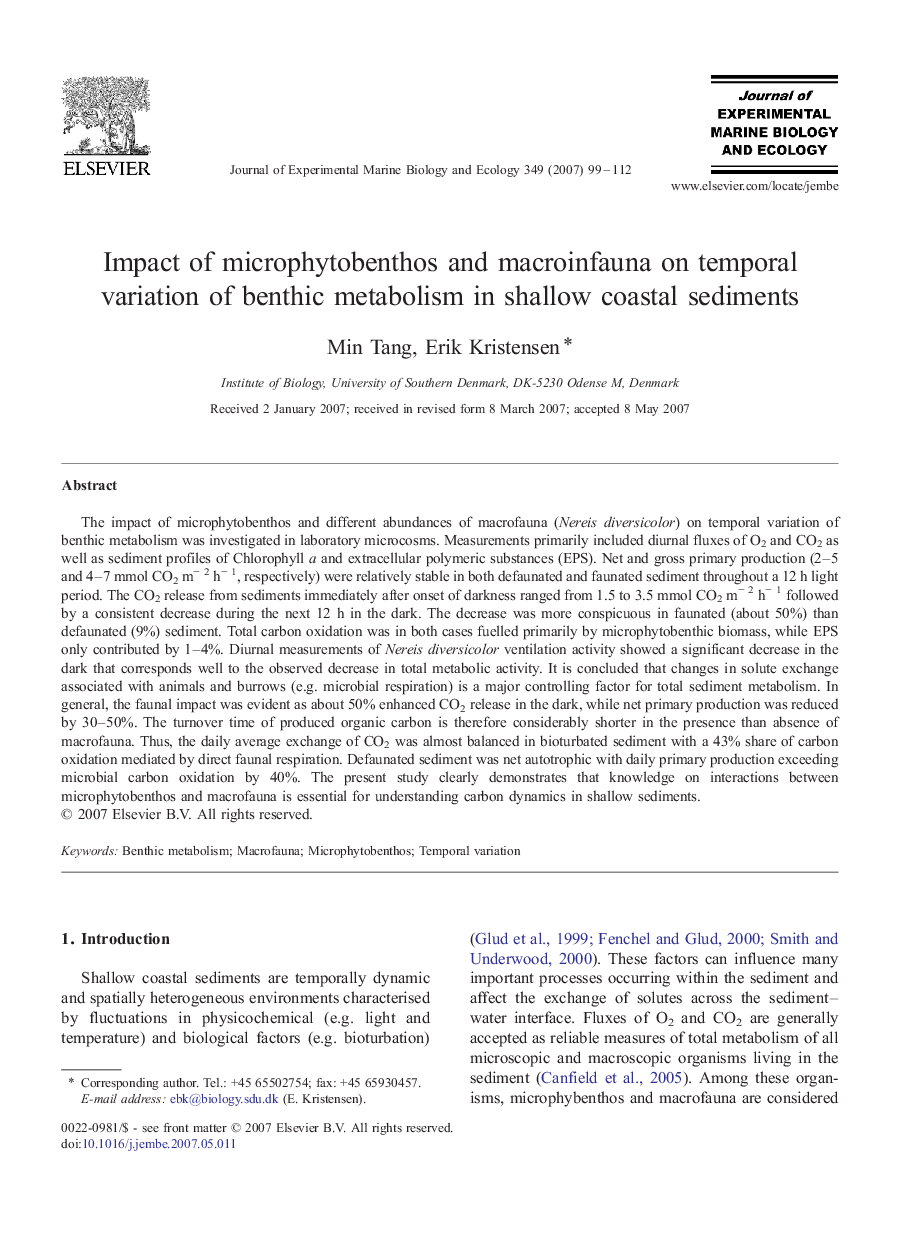| کد مقاله | کد نشریه | سال انتشار | مقاله انگلیسی | نسخه تمام متن |
|---|---|---|---|---|
| 4397709 | 1305901 | 2007 | 14 صفحه PDF | دانلود رایگان |
عنوان انگلیسی مقاله ISI
Impact of microphytobenthos and macroinfauna on temporal variation of benthic metabolism in shallow coastal sediments
دانلود مقاله + سفارش ترجمه
دانلود مقاله ISI انگلیسی
رایگان برای ایرانیان
کلمات کلیدی
موضوعات مرتبط
علوم زیستی و بیوفناوری
علوم کشاورزی و بیولوژیک
علوم آبزیان
پیش نمایش صفحه اول مقاله

چکیده انگلیسی
The impact of microphytobenthos and different abundances of macrofauna (Nereis diversicolor) on temporal variation of benthic metabolism was investigated in laboratory microcosms. Measurements primarily included diurnal fluxes of O2 and CO2 as well as sediment profiles of Chlorophyll a and extracellular polymeric substances (EPS). Net and gross primary production (2-5 and 4-7Â mmol CO2Â mâ 2 hâ 1, respectively) were relatively stable in both defaunated and faunated sediment throughout a 12Â h light period. The CO2 release from sediments immediately after onset of darkness ranged from 1.5 to 3.5Â mmol CO2Â mâ 2 hâ 1 followed by a consistent decrease during the next 12Â h in the dark. The decrease was more conspicuous in faunated (about 50%) than defaunated (9%) sediment. Total carbon oxidation was in both cases fuelled primarily by microphytobenthic biomass, while EPS only contributed by 1-4%. Diurnal measurements of Nereis diversicolor ventilation activity showed a significant decrease in the dark that corresponds well to the observed decrease in total metabolic activity. It is concluded that changes in solute exchange associated with animals and burrows (e.g. microbial respiration) is a major controlling factor for total sediment metabolism. In general, the faunal impact was evident as about 50% enhanced CO2 release in the dark, while net primary production was reduced by 30-50%. The turnover time of produced organic carbon is therefore considerably shorter in the presence than absence of macrofauna. Thus, the daily average exchange of CO2 was almost balanced in bioturbated sediment with a 43% share of carbon oxidation mediated by direct faunal respiration. Defaunated sediment was net autotrophic with daily primary production exceeding microbial carbon oxidation by 40%. The present study clearly demonstrates that knowledge on interactions between microphytobenthos and macrofauna is essential for understanding carbon dynamics in shallow sediments.
ناشر
Database: Elsevier - ScienceDirect (ساینس دایرکت)
Journal: Journal of Experimental Marine Biology and Ecology - Volume 349, Issue 1, 28 September 2007, Pages 99-112
Journal: Journal of Experimental Marine Biology and Ecology - Volume 349, Issue 1, 28 September 2007, Pages 99-112
نویسندگان
Min Tang, Erik Kristensen,